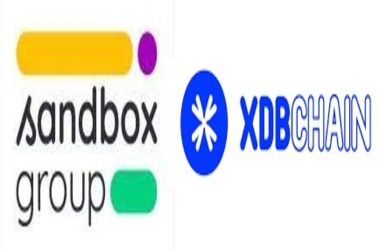 Mastercard has achieved a significant milestone by successfully showcasing a groundbreaking solution capable of tokenizing Central Bank Digital Currencies (CBDCs) across different blockchains. The primary objective behind this innovation is to provide consumers with the ability to engage in commerce across multiple blockchains, all while ensuring enhanced security measures.
Mastercard has achieved a significant milestone by successfully showcasing a groundbreaking solution capable of tokenizing Central Bank Digital Currencies (CBDCs) across different blockchains. The primary objective behind this innovation is to provide consumers with the ability to engage in commerce across multiple blockchains, all while ensuring enhanced security measures.
Collaborative Development:
This remarkable solution is the result of a collaborative effort between Mastercard, Cuscal, and Mintable. It forms a crucial component of a research project initiated by the Reserve Bank of Australia (RBA) and the Digital Finance Cooperative Research Centre (DFCRC). The primary aim of this endeavor is to explore potential use cases for a CBDC within the Australian context. Part of this exploration involves implementing stringent controls to ensure that the pilot CBDC can only be held, utilized, and redeemed by authorized entities who have undergone Know Your Customer (KYC) verification and risk assessments, carried out by licensed service providers.
Unlocking Commerce Across Multiple Blockchains:
Richard Wormald, Division President, Australasia at Mastercard, explained the motivation behind this pioneering solution, emphasizing the growing demand from consumers to engage in commerce across a range of blockchains, including public ones. He further highlighted the potential for this technology to expand consumer choice and foster collaboration between public and private networks, ultimately making a significant impact in the digital currency space.
A Live Demonstration of the Solution:
Mastercard effectively demonstrated the capabilities of this solution in a live environment. It illustrated how a holder of a pilot CBDC could seamlessly purchase a Non-Fungible Token (NFT) listed on the Ethereum public blockchain. The process involved “locking” the required amount of the pilot CBDC within the RBA’s pilot CBDC platform and subsequently minting an equivalent amount of wrapped pilot CBDC tokens on the Ethereum blockchain.
Stringent Platform Controls:
A critical aspect of this test transaction was the requirement for the Ethereum wallets of both the buyer and seller, along with the NFT marketplace smart contract, to be ‘allow-listed’ within the platform. This meticulous approach ensured that all other transfers of the wrapped pilot CBDC remained blocked. Importantly, this demonstration underscored the platform’s capability to implement stringent controls, a feature that extends to public blockchains as well.
Leveraging Mastercard’s Multi Token Network:
This successful pilot transaction drew on the strengths of Mastercard’s Multi Token Network, which was introduced in June 2023. This innovative network comprises two fundamental pillars. The first is Mastercard Crypto Credential, a component that establishes a common set of verification standards and infrastructure. This is designed to facilitate secure interactions using blockchain networks. The second pillar is interoperability, which ensures the extension of capabilities across various supported payment tokens and networks in a scalable and efficient manner.
Conclusion:
Mastercard’s pioneering solution, allowing for the tokenization of CBDCs across diverse blockchains, is a significant step forward in the world of digital currencies. By enabling cross-blockchain CBDC transactions and implementing stringent controls, it not only enhances security but also opens up a world of possibilities for consumers and stakeholders in the digital currency space. This innovation aligns with the evolving landscape of the digital economy, where consumers are seeking increased choice and flexibility in their transactions. It also signifies the potential for productive collaboration between public and private networks, ultimately contributing to the continued growth and development of digital currencies and blockchain technology.








